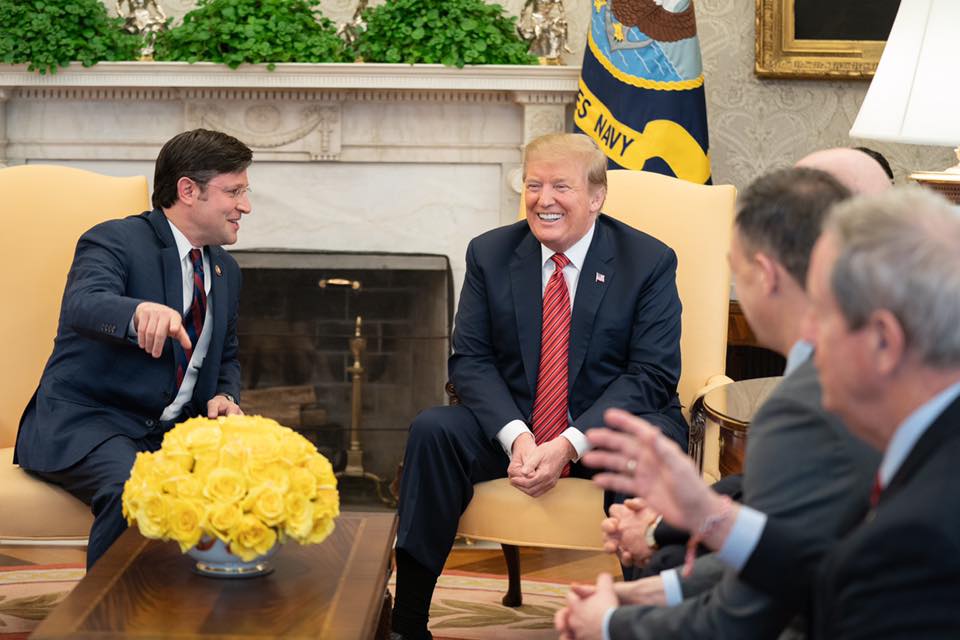Donald Trump’s return to the White House has reignited intense discussions about the future of healthcare in the United States. As part of his second-term agenda, Trump has pledged to address significant challenges within the nation’s healthcare infrastructure. While his proposals aim to modernize healthcare facilities and expand access, critics remain skeptical about their feasibility and impact.
Trump’s Vision for Healthcare Modernization
Trump has positioned healthcare reform as a cornerstone of his administration’s second-term priorities. His plans reportedly include a substantial increase in federal funding to upgrade aging hospitals, expand telehealth services, and strengthen rural healthcare networks. Additionally, Trump’s team has indicated that partnerships with private companies will play a critical role in accelerating innovation and improving healthcare delivery.
One of the key proposals involves allocating resources to repair and modernize existing facilities, particularly in underserved areas. Advocates for the plan argue that this focus could significantly improve outcomes for millions of Americans. “Healthcare infrastructure is long overdue for a transformation,” said Dr. Linda Matthews, a healthcare policy expert. “If these initiatives are executed properly, they could bridge longstanding gaps in access and quality.”
However, critics have expressed concerns over funding sources and the potential redirection of resources from other vital programs. “Infrastructure improvements sound great on paper, but the details of execution will determine their success,” said Matthews.
Mixed Reactions from Public and Experts
Reactions to Trump’s healthcare initiatives have been mixed, with some expressing optimism and others cautioning against potential pitfalls. Public debates online have further amplified the divide.
User @HealthcareHero tweeted, “If Trump delivers on healthcare infrastructure, it could transform rural communities. This is exactly what we need right now!” Another commenter, @PolicyCritic, countered, “Bold promises, but where’s the money coming from? We’ve seen grand plans fall apart before.”
Others focused on the potential benefits for telehealth services. “Telehealth expansion is critical. Rural America needs these advancements yesterday,” wrote @RuralHealthAdvocate. Meanwhile, @SystemicFix pointed out, “Infrastructure isn’t the only problem. Without addressing affordability, these changes won’t help the people who need it most.”
Veterans’ healthcare also emerged as a hot topic. “Our VA hospitals are in desperate need of upgrades. This could be Trump’s chance to truly support our veterans,” tweeted @VetCareChampion. Conversely, @HealthRealist questioned, “Will veterans really see change, or is this another hollow promise? Action speaks louder than words.”
Challenges on the Horizon
Despite the ambitious scope of Trump’s healthcare agenda, significant hurdles remain. Securing bipartisan support in Congress could prove difficult, particularly given concerns about funding and implementation. Furthermore, experts have highlighted the complexity of addressing systemic issues, such as workforce shortages and inequities in healthcare access.
The success of these initiatives will ultimately depend on effective collaboration between federal, state, and private stakeholders. As details of Trump’s healthcare policies continue to unfold, the nation remains divided on whether these proposals will meet the country’s pressing needs.



 Belarus Frees Opposition Leaders Maria Kalesnikava and Viktar Babaryka in U.S.-Brokered Deal
Belarus Frees Opposition Leaders Maria Kalesnikava and Viktar Babaryka in U.S.-Brokered Deal  Trump Signals Two Final Candidates for Fed Chair, Calls for Presidential Input on Interest Rates
Trump Signals Two Final Candidates for Fed Chair, Calls for Presidential Input on Interest Rates  California, 18 States Sue to Block Trump’s $100,000 H-1B Visa Fee
California, 18 States Sue to Block Trump’s $100,000 H-1B Visa Fee  Colombia’s Clan del Golfo Peace Talks Signal Mandatory Prison Sentences for Top Leaders
Colombia’s Clan del Golfo Peace Talks Signal Mandatory Prison Sentences for Top Leaders  Thailand Vows Continued Military Action Amid Cambodia Border Clash Despite Trump Ceasefire Claim
Thailand Vows Continued Military Action Amid Cambodia Border Clash Despite Trump Ceasefire Claim  Supporters Gather Ahead of Verdict in Jimmy Lai’s Landmark Hong Kong National Security Trial
Supporters Gather Ahead of Verdict in Jimmy Lai’s Landmark Hong Kong National Security Trial  U.S. Intelligence Briefly Curtailed Information Sharing With Israel Amid Gaza War Concerns
U.S. Intelligence Briefly Curtailed Information Sharing With Israel Amid Gaza War Concerns  Special Prosecutor Alleges Yoon Suk Yeol Sought North Korea Provocation to Justify Martial Law
Special Prosecutor Alleges Yoon Suk Yeol Sought North Korea Provocation to Justify Martial Law  Israeli Airstrike in Gaza Targets Senior Hamas Commander Amid Ceasefire Tensions
Israeli Airstrike in Gaza Targets Senior Hamas Commander Amid Ceasefire Tensions  Preservation Group Sues Trump Administration to Halt $300 Million White House Ballroom Project
Preservation Group Sues Trump Administration to Halt $300 Million White House Ballroom Project  Air Force One Delivery Delayed to 2028 as Boeing Faces Rising Costs
Air Force One Delivery Delayed to 2028 as Boeing Faces Rising Costs  Bolivia Orders Pre-Trial Detention of Former President Luis Arce Over Embezzlement Probe
Bolivia Orders Pre-Trial Detention of Former President Luis Arce Over Embezzlement Probe  New Epstein Photos Surface Showing Trump as Lawmakers Near Document Release Deadline
New Epstein Photos Surface Showing Trump as Lawmakers Near Document Release Deadline  U.S. Lifts Sanctions on Brazilian Supreme Court Justice Amid Shift in Brazil Relations
U.S. Lifts Sanctions on Brazilian Supreme Court Justice Amid Shift in Brazil Relations  U.S. Soldiers Killed in ISIS Attack in Palmyra, Syria During Counterterrorism Mission
U.S. Soldiers Killed in ISIS Attack in Palmyra, Syria During Counterterrorism Mission  International Outcry Grows Over Re-Arrest of Nobel Laureate Narges Mohammadi in Iran
International Outcry Grows Over Re-Arrest of Nobel Laureate Narges Mohammadi in Iran 































